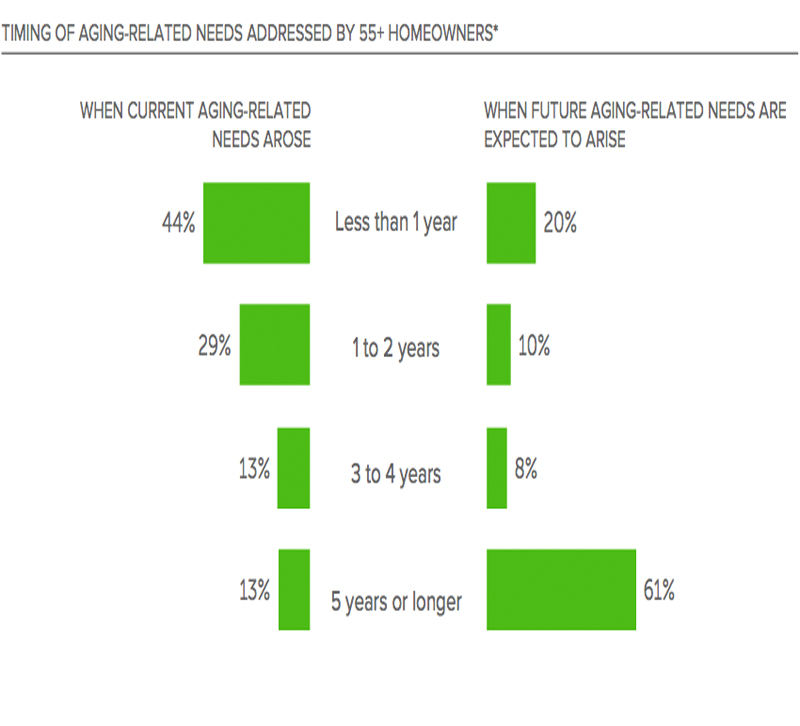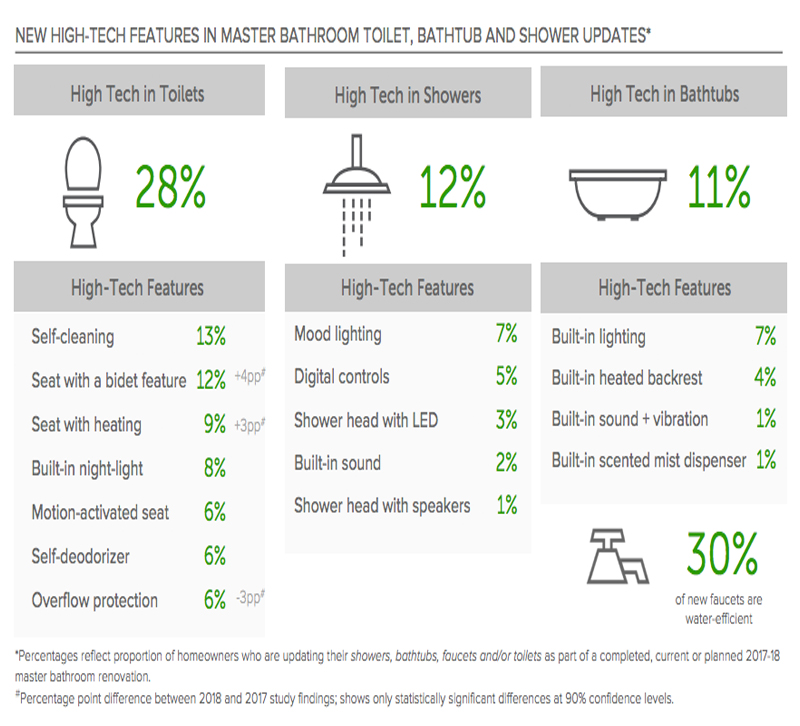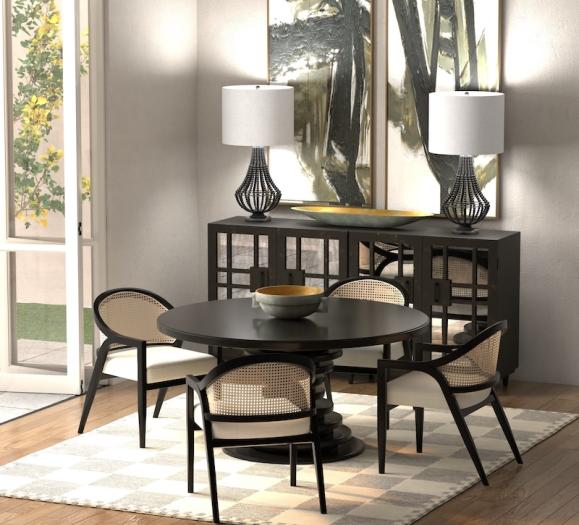Each year, Houzz.com surveys homeowners who have completed or recently completed a bathroom renovation to get a glimpse of who they are and what they want from their bathrooms. This year's 2018 Bathroom Trends study gave us plenty to think about.
Baby Boomers are leading the charge in bathroom renovations, representing 52 percent of the 1,100 people that Houzz surveyed. Only 9 percent of those surveyed were Millennials, but that's actually up from 4 percent last year. Of that Baby Boomer group, 56 percent reported that they would be addressing age-related needs during their bathroom renovation. Thirty-five percent are addressing current needs, and 21 percent are planning ahead for issues in the future.
Additional bathroom trends from the study include:
- The majority of homeowners upgrade substantial features such as showers and vanities during master bathroom renovations (84 and 83 percent, respectively). Nearly half of renovating homeowners also change their master bathroom layout, and some move the room’s location altogether (44 and seven percent, respectively).
- Gray color palettes continue to lead for walls and flooring. Gray cabinets are also increasingly popular, having experienced a steady climb from a 10 percent share in 2016 to 16 percent in 2018.
- Two in five renovating homeowners do not match metal finishes across fixtures and hardware in master bathrooms (42 percent). Of the 58 percent of renovating homeowners who do match metal finishes, the most popular options are matte nickel and polished chrome (38 and 28 percent, respectively).
- Contemporary style continues to be the leading choice among renovating homeowners, despite its drop in popularity over the past three years. Farmhouse style, on the other hand, has more than doubled in popularity from three percent in 2016 to seven percent in 2018.
And those are just the easy takeaways. Here are our top three insights from the study.
Aging-in-place comes fast
In last year's study, we saw the decline of the bathtub in favor of the shower because more Boomer renovators were starting to consider aging-in-place. All it took was one year for more of them to really think about the layouts of their bathrooms. Of those Baby Boomers addressing current aging needs, 73 percent said they're reacting to health needs that arose less than two years ago.

From the 21 percent who said they would be addressing future needs, 61 percent don't expect to need aging-in-place details (think non-slip floors, railings, etc) for another five years, but if there's one thing we can take away from those currently remodeling due to an age-related issue, it's that these problems can arise quickly and without warning.
Toilets are where it's at
Though consumers still want premium features for their showers and tubs, 46 percent of surveyed consumers said they would be updating their toilets in their 2017-18 bathroom renovations, and they're not just looking to stick any old toilet in their bathrooms. The demand for one-piece toilets grew to 28 percent, up 7 percent from last year, while double-flush toilets grew 5 percentage points this year, reaching 19 percent.
And those are just the regular features.

As showers and tubs go high-tech, consumers expect their toilets to do the same, and it's the appliance consumers want to upgrade the most — 28 percent compared to 12 (high-tech showers) and 11 percent (high-tech bathtubs). It may be because subbing in a toilet is easier than having to rewire a shower, or it may be that the bidet is catching on.
Labor shortages affect projects
Not surprisingly, homeowners don't want to take on complex plumbing and electrical remodels themselves, so they're still hiring professionals to help them complete the work. In fact, 83 percent of those surveyed said they have or would hire a professional, down just 1 percent from the previous year.
That being said, only 46 percent of those surveyed said they'd hire a general contract, down from 53 percent last year, and 17 percent said they would hire a specialty service provider (plumber, electrician, cabinet maker, etc.) without a general contractor.
What's causing this? Houzz says a shortage of available contractors may be to blame. Only 13 percent said they would hire an interior designer for a bathroom remodel, so while there may be a shortage of contractors, there may also be an opportunity for interior designers.
What do you find most interesting about the 2018 Houzee Bathroom Trends study? Share with us in the comments!







